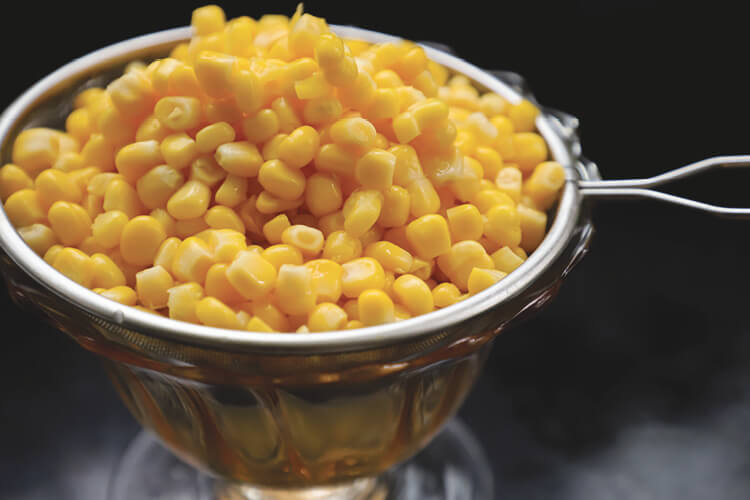Increasing volume is one way to grow a business. Another is to add new product offerings. For many food manufacturers, creating ready-to-eat (RTE) food from the raw materials they’ve traditionally sold makes a lot of sense. That’s never been more true than in the aftermath of the COVID-19 global pandemic.
According to McKinsey, consumers in APAC have changed their food preferences since March 2020. They want healthy and locally sourced food much more than before COVID-19. Mordor Intelligence reports RTE food products was one of the few industries to have an immense surge in demand during the coronavirus pandemic.
This increased demand has led many of our customers to rethink how they can offer RTE products. The unexpected opportunity also means many of them are reconfiguring their plant or using production equipment in ways they hadn’t considered when initially purchasing conveying systems.
Materials handling requirements for steamed corn
That’s exactly what happened when a fresh produce company in Australia wanted to expand into an RTE product offering. They needed a conveying solution to handle 20 kg batches of steamed corn. They had the following requirements:
- Convey materials from ground level at a nearly vertical angle and in a small footprint installation. (More products often doesn’t mean more room in the plant!)
- Two cooking vessels to be fed from one central location at floor level
- High-speed transfer rate with no corn kernel damage, which would be visible to consumers in the final product
- Hygienic, food-safe conveying
- Ability to Clean-in-Place (CIP), using water to clean the machinery.
Shifting from agricultural conveying to food and beverage processing
We knew from experience that using an original Floveyor conveyor for dried corn kernels was not a problem. The soft, damp, and easy-to-squash cooked kernel was an entirely different proposition.
We enlisted the help of the Floveyor Queensland distributor, Metric Engineering Solutions, at their test facility in Brisbane to carry out materials handling trials.
The customer’s production and engineering team was onsite to witness materials testing on a vertical 3 ft Floveyor aero-mechanical conveyor (AMC). A batch of steamed corn was loaded into the inlet hopper and transferred successfully with no damage and minimal product retention. Water was then fed into the system to demonstrate the ease of cleaning.
Food-safe manufacturing for the AMC method of conveying
To meet the customer’s quality requirements, the system was manufactured for food-safe conveying using Stainless Steel 304 with a metal and x-ray detectable rope assembly. The project also included an integrated control system pre-wired and tested at Floveyor’s Perth manufacturing facility prior to shipping to Queensland.
Floveyor in operation: a recipe for continuous downstream processing
This is how it’s working every day since the Floveyor machinery was installed. Operators transfer a batch of product into a vessel then flush it through with water as part of the recipe. This ensures the unit is clean before the next batch is transferred to the next vessel. Batch after batch, an original Floveyor conveying system keeps a continuous downstream process running.
The customer has been able to increase the number of products available to consumers.
They are successfully manufacturing RTE food with the help of a Floveyor conveyor while still delivering the fresh produce their company has always offered. This dual approach to the market makes great business sense now more than ever.
If you’re adding RTE food to your production line, get in touch with us to find out how original Floveyor machinery and equipment can help with hygienic, food-safe conveying systems. We’re ready to help you find the best conveying solution for your plant.

